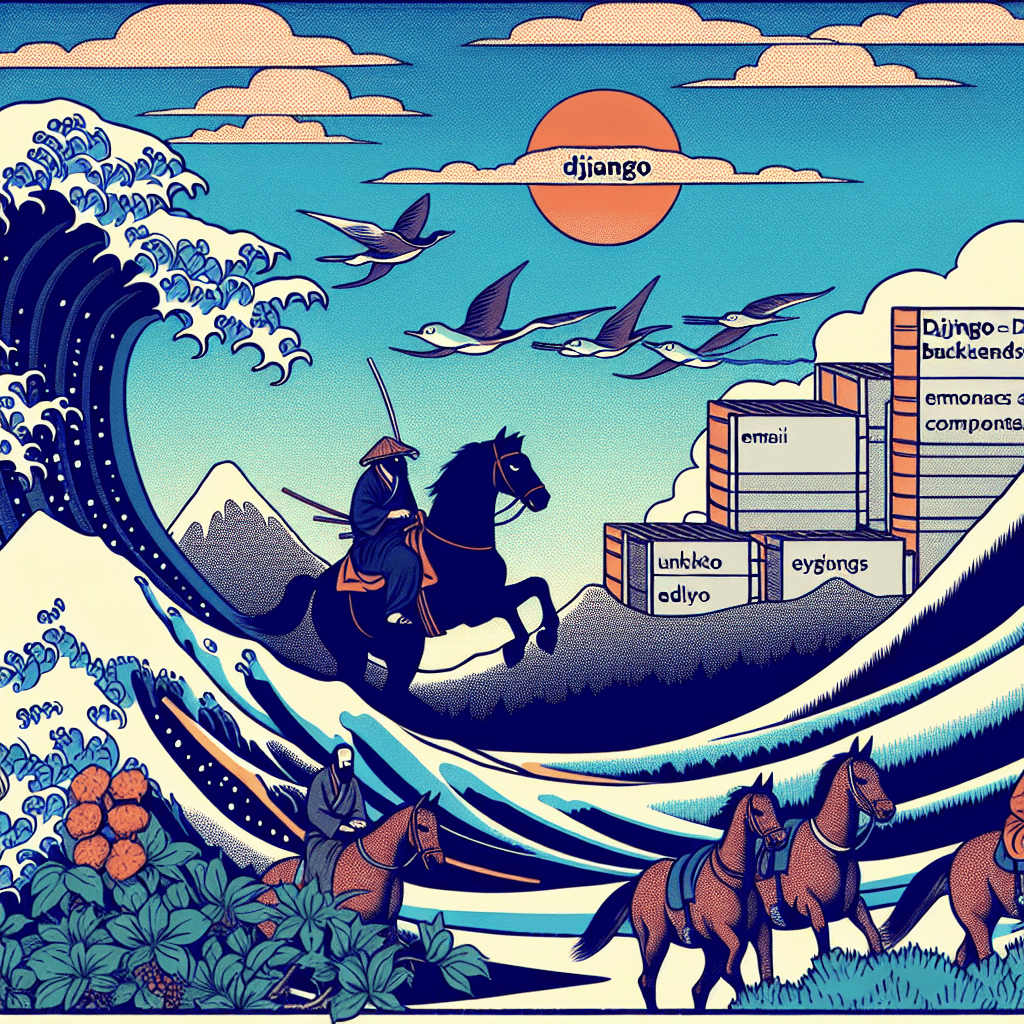Understanding Django Backends: A Deep Dive into Email and Other Backends
syndu | Sept. 26, 2023, 10:58 a.m.

Understanding Django Backends: A Deep Dive into Email and Other Backends
Hello Readers,
Today, let's explore the concept of "backends" in Django, a high-level Python web framework. Specifically, we'll focus on the email backend and other types of backends that exist within the Django framework.
What is a Backend in Django?
In Django, a "backend" is a component that handles certain types of operations. The term "backend" in Django doesn't refer to the server-side part of a web application (as it does in general web development terminology), but rather to a component that handles certain types of operations. Django has several types of backends, including database backends, cache backends, email backends, and more.
Email Backend
An email backend in Django is a component that handles sending emails. Django provides several email backends, including SMTP and console email backends. You can also create your own custom email backend if you need to.
When you send an email in Django, the framework uses the email backend to handle the actual sending of the email. The email backend takes care of the details of how the email is sent, allowing you to focus on the content of the email rather than the details of how it's sent.
Other Backends in Django
In addition to the email backend, Django also has several other types of backends:
- Database Backends: These handle interactions with the database. Django comes with several database backends for different types of databases, including PostgreSQL, MySQL, SQLite, and Oracle.
- Cache Backends: These handle caching, which is a way to store data so that future requests for that data can be served faster. Django provides cache backends for various caching systems, including Memcached and database caching.
- Authentication Backends: These handle authentication (verifying who a user is). Django comes with a model-based authentication backend, but you can also create your own.
- Storage Backends: These handle file storage. Django comes with a filesystem storage backend and a memory-based storage backend, and you can also create your own.
Conclusion
The term "backend" in Django refers to a component that handles certain types of operations, such as sending emails, interacting with the database, caching, authentication, and file storage. By providing these backends, Django allows you to focus on building your application without having to worry about the details of how these operations are performed.
Remember, Django follows the DRY principle - Don't Repeat Yourself. Its aim is to simplify the creation of complex, database-driven websites with a focus on reusability and "pluggability" of components.
I hope this blog post has provided a helpful overview of the concept of "backends" in Django. As always, I'm here to answer any further questions you may have. Let's continue to learn and grow together in this exciting field of web development!



